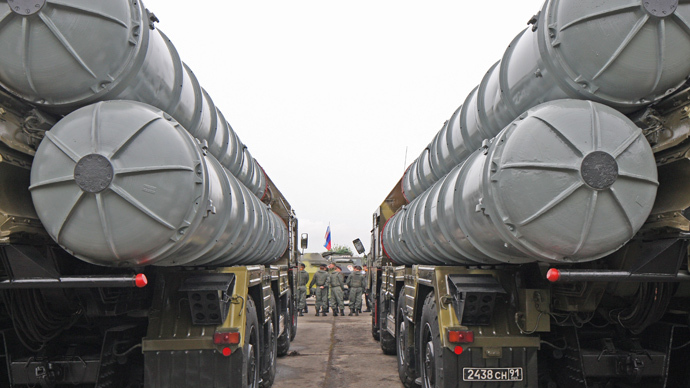
S-300 Missile System
Russia recently announced that an anti-aircraft missile system that was exclusively used by Russian forces will soon be exported for the first time outside of Russia, specifically to China. Restrictions on the S-400 system were previously borne out of the possible political ramifications of one country having an advanced missile that could eliminate most, if not all airborne threats, which could lead to an unbalancing of regional security and possible economic measures against Russia itself.
The S-400 missile system is one of the most advanced anti-aircraft systems in the world today, and can be used to intercept aircraft, cruise missiles, ballistic missile systems and advanced drones. China’s purchase of the S-400 will complement its S-300 and indigenously-produced air defenses.
In addition, Russia will be sending over the S-300 that was purchased by Iran in 2007. The completion of the purchase comes after years of U.N. restrictions and Russian restrictions in selling the advanced system to Iran. After Iran purchased the system and the Russian government refused to deliver it, the Iranians brought a legal case against the producer of the S-300, which led to years of negotiations and numerous offers of less advanced systems like the S-300VM and SA-15 Tor. The sanctions regime placed on Iran in an attempt to halt its nuclear weapons program further reduced the likelihood of the S-300 export taking place.
As the possibility of a deal had become more likely following recent talks in Lausanne, Russian Foreign Minister Sergey Lavrov announced this week that the restrictions on the S-300 sale would be removed. There were also rumors that Iran may be given the opportunity to purchase the S-400 as well. Because of this, Iran’s adversaries in the region have yet again voiced their concerns, as conventional warfare had heavily ramped up in the region and the S-300 would add tension and conflict to the current situation. In response, John Kerry has taken some minor diplomatic steps to deter the sale of the S-300 to Iran. It would make it very costly for any air power, including the United States, to successfully strike Iranian nuclear power plants in the event the nuclear deal fails.
Armyrecognition.com detailed the S-300 system that will be sold as the previously banned S-300PMU-1 — the only option the Iranian government would accept. The installation of the S-300 in 2015 could lead to an acceleration of the conflict in the region as Iran’s adversaries take more assertive actions against Iran before the defense shield is active.